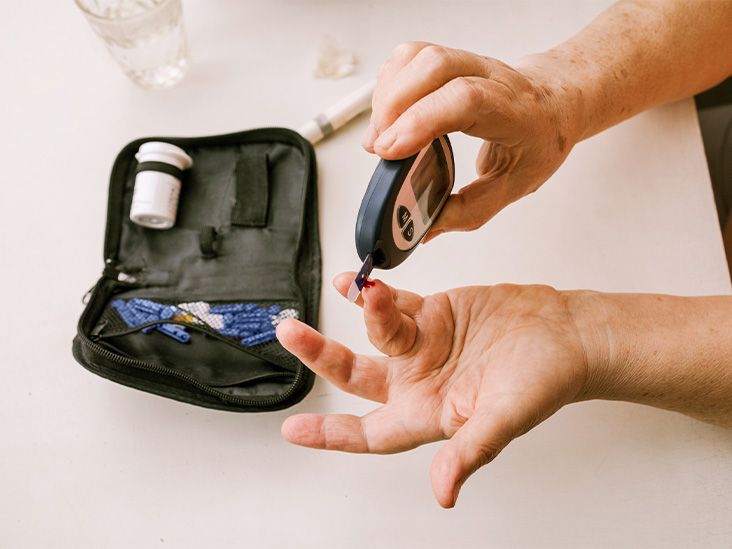Vaginal pain can be temporary or chronic. It may be due to an infection or injury, or it may not have a known cause. The cause of the pain will determine the treatment options.
Fear or embarrassment may sometimes keep a person from seeking treatment for vaginal pain, and anecdotal evidence suggests some doctors can be quick to dismiss this symptom. However, healthcare professionals should work diligently to provide a diagnosis and treatment.
Read on to learn about the symptoms and causes of vaginal pain, as well as the treatment options.
A note about sex and gender
Sex and gender exist on spectrums. This article will use the terms “male,” “female,” or both to refer to sex assigned at birth. Learn more.

A wide range of conditions can cause vaginal pain, such as the following:
Yeast infections
Yeast infections are among the most common causes of vaginal pain. According to the Centers for Disease Control and Prevention (CDC), an estimated
A yeast infection can cause itching, burning, and, sometimes, a cottage cheese-like discharge from the vagina.
These infections do not usually spread through sexual intercourse, and most experts do not recommend that a person’s sexual partners receive treatment.
Bacterial vaginosis
Bacterial vaginosis (BV) is also a common infection, particularly among people who are sexually active.
The United Kingdom’s National Health Service (NHS) notes that although BV does not always cause symptoms, some people may notice a fishy odor, particularly after sexual activity, and thin greyish-white discharge. BV does not typically cause vaginal pain or itching. However, some people with the condition may experience this.
Many people mistake the symptoms of BV for those of a yeast infection. However, the two conditions have different causes and require different treatments.
Other infections
Some other infections, especially chlamydia and gonorrhea — both of which are sexually transmitted infections (STIs) — can also cause pain and unusual discharge.
Sexual health resources
Visit our dedicated hub for more research-backed information and in-depth resources on sexual health.
Vaginitis
Doctors may refer to the inflammation that accompanies vaginal infections as vaginitis. This inflammation may be accompanied by itching, changes in discharge, and pain.
In addition to vaginal infections, some possible causes of changes in microbial flora (healthy bacteria in the vagina) that may lead to vaginitis include:
- changes in hormone levels during pregnancy, breastfeeding, or menopause
- taking antibiotics
- using spermicides
- douching
- vaginal sex
Physical trauma
Physical injury to the vagina or vulva can cause vaginal pain. Some injuries are relatively minor, such as cuts from shaving. However, one of the most common causes of vaginal injury and pain is childbirth.
Giving birth causes vaginal tearing in most people during their first vaginal delivery, according to a 2016 article. The tear usually extends into the perineum, the area between the vagina and anus. Doctors refer to this as a perineal tear. It is also possible for the clitoris or labia to tear during childbirth.
A doctor or midwife may need to stitch up severe tears. The stitches they use will dissolve over time and do not require removal.
Pelvic floor dysfunction or injury
Damage to the muscles of the pelvic floor can cause pain in the vagina, stomach, and back, as well as affecting muscles in other areas.
Some factors that can increase the risk of pelvic floor issues include:
- age
- pregnancy
- injury from childbirth
- episiotomy, which is a surgical incision to enlarge the vaginal opening into the perineum during labor
Some people with pelvic floor dysfunction also experience urinary incontinence, especially when sneezing or jumping.
A person may also experience fecal incontinence, pain when passing stool, or both.
Vulvodynia and vaginismus
Vulvodynia is a type of chronic pain in the vulva, vagina, or both. The pain varies from person to person, but many report a burning pain that is fairly continuous.
Healthcare professionals may use the term vaginismus to refer to chronic pain in the vagina that occurs during situations such as sexual intercourse, tampon insertion, and vaginal exams.
Vulvodynia and vaginismus may occur as a result of multiple factors. The diagnostic process can be lengthy because it involves excluding other causes of vaginal pain.
It is best for anyone who suspects they may have either condition to speak with a doctor. Various treatments are available.
Bartholin’s cyst
The Bartholin’s glands sit on either side of the entrance to the vagina, helping with vaginal lubrication.
A blockage in one of these glands can give rise to a cyst, which may feel like a hard lump or look like a pimple. The cyst can cause pain, usually on one side of the vagina.
Bartholin’s cysts may get larger over several days before disappearing or rupturing. Sometimes, they become infected, causing intense pain.
Vaginal prolapse
Vaginal prolapse occurs when one or more of the pelvic organs, such as the vagina, urethra, and uterus, drop down from their usual position in the body. When this happens, one or more of these organs may protrude into or out from the vagina.
The condition occurs as a result of injury to the muscles and other tissues that support the pelvic organs. Some possible causes of these injuries include:
- pregnancy
- childbirth, particularly vaginal birth
- aging
- obesity
Endometriosis
Endometriosis can cause chronic pelvic pain, which a person may feel in the abdomen or vagina. The condition involves the uterine lining tissue growing on the outside of the uterus.
Someone with endometriosis may also notice the pain during sexual activity, bowel movements, or urination. The condition can also cause heavy periods.
However, some people may not experience any symptoms at all.
Vaginal pain can have many different characteristics. Describing the pain in detail can help a doctor correctly diagnose the cause.
It is best for people to also mention any additional symptoms, such as skin discoloration, painful lumps, or an unusual odor in the genital area.
Below are some possible types of vaginal pain:
- burning
- itching
- tightness, soreness, and muscle spasms
- tenderness or sensitivity, which may be more common after giving birth
Some people may only notice or experience these symptoms during or after sexual activity.
A doctor can usually diagnose a vaginal yeast infection based on a person’s symptoms alone, though they may need to test a sample of discharge to help them rule out bacterial infections and STIs, such as gonorrhea and chlamydia.
The diagnostic process may also involve the doctor:
- performing a physical examination to check for recent injuries
- carrying out a pelvic exam to check for muscle abnormalities, swelling, and irritation
- taking a comprehensive medical history, during which they are likely to ask about risk factors for specific vaginal health issues
- taking a sample of tissue for biopsy
- requesting a laparoscopy for endometriosis
- requesting an ultrasound
Treatment will depend on the underlying cause of vaginal pain. However, it may include medications, different types of therapy, and surgery.
- Infections: Antibiotics and antifungal medications can help treat infections, such as BV and yeast infections.
- Bartholin’s cyst: These typically go away on their own, although using warm compresses at home can help speed this process. If a cyst grows very large, a doctor may surgically drain it. If a cyst becomes infected, it may require antibiotics.
- Pelvic floor injuries: Physical therapy may help with pelvic floor injuries. A physical therapist can work with the person to develop a plan for strengthening the pelvic floor at home.
- Vulvodynia and vaginitis: Treatments for these conditions may include:
- oral and topical pain medications
- pelvic floor exercises
- sex therapy
- biofeedback therapy
- surgery
Strategies for preventing some forms of vaginal pain include:
- using a condom during sex
- undergoing regular STI testing and asking all partners about their STI status
- changing out of clothes as soon as possible if they become wet or sweaty, as moisture provides an ideal environment for yeast
- wearing cotton underwear
- asking a doctor or midwife about methods of preventing tears during childbirth, if pregnant
- not using douches, feminine sprays, scented soaps, or talcum powders in the area
- not using scented forms of the following:
- sanitary products
- toilet paper
Vaginal pain may be temporary or chronic, and it can range from mild irritation to severe, debilitating pain. The feeling may result from infection, injury, or a range of other causes.
It is best for anyone with vaginal pain ton contact a healthcare professional for diagnosis. Most often, vaginal pain goes away once a person finds the right treatment.
Some people have reported that healthcare professionals can be unsympathetic and unhelpful when it comes to vaginal pain. If this is the case, it is important to ask for a second opinion from someone with the appropriate training and skills, who will be able to help.


